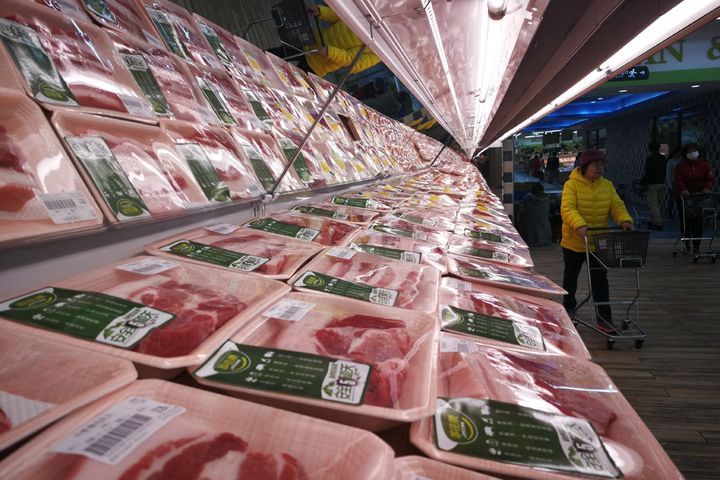 CPI Surge to Have Little Impact on China's Monetary Policy, Economists Say
CPI Surge to Have Little Impact on China's Monetary Policy, Economists Say(Yicai Global) Dec. 11 -- China's consumer price inflation will not constrain monetary policy since a specific cause -- skyrocketing pork prices -- was the main reason for the consumer price index hitting an eight-year high last month, according to experts interviewed by Yicai Global. But the chance of a rate cut this year remains low.
The CPI was jumped 4.5 percent in November from a year earlier, the fastest pace since January 2012, the National Bureau of Statistics said on Dec. 9. The gain was 0.7 percentage point more from October and above a market consensus for 4.3 percent. The average annual increase in the CPI was 2.8 percent between January and November.
Pork prices more than doubled last month from a year earlier amid tight supply following the devastating effects of African swine fever on the nation's hog herd.
Factory gate prices are still falling, however. The producer price index fell 1.4 percent last month from a year earlier, the NBS said. Annual growth averaged -0.3 percent over the first 11 months.
The surging cost of a few consumer goods was caused by structural problems in the supply and demand of the particular product and was not due to any increase in market liquidity, said Lian Ping, an economist at Bank of Communications financial research center. So that should not overly constrain monetary policy.
There is still no basis for significant inflation or deflation overall, so the overall tone of monetary policy is expected to remain prudent and neutral, according to Wu Yong, an analyst at Soochow Securities.
Some market observers think the People's Bank of China is more likely to cut the reserve requirement ratio in the first quarter of next year. They cite three reasons for this: it can free up liquidity early for special local government bonds; ease banks' borrowing costs; and alleviate capital demand pressures around New Year's Day, the Chinese New Year in late January and the peak period for tax filing.
Regulators are expected to rein in the use of monetary instruments in the short term to avoid fueling expectations for rising prices, said Zhang Deli, a macro analyst at Yuekai Securities. Subsequent policies will mostly guide the market-oriented loan prime rate lower to trim financing costs for the real economy.
The PBOC unveiled a plan in August to improve and reform the country's LPR mechanism in its latest efforts to reduce the cost of borrowing.
Starting from Aug. 20, the National Interbank Funding Center was to disclose the new LPR on the 20th day of each month, for one-year and above five-year loans, to serve as pricing references for new bank lending.
A rate cut is less likely as the PBOC recently said it is determined to keep the yuan exchange rate stable, noted Wen Bin, chief research staff at China Minsheng Bank. The central bank is expected to adjust its monetary policy's primary objective based on economic growth and inflation.
Hua Changchun, chief economist at Guotai Junan Securities research institute, said reductions in both the RRR and interest rates are possible after the second quarter of 2020 as the opportunity to ease monetary policy may be available again when the CPI starts to fall, though the possibility of policy adjustment in the short term is low.
Editor: Tang Shihua